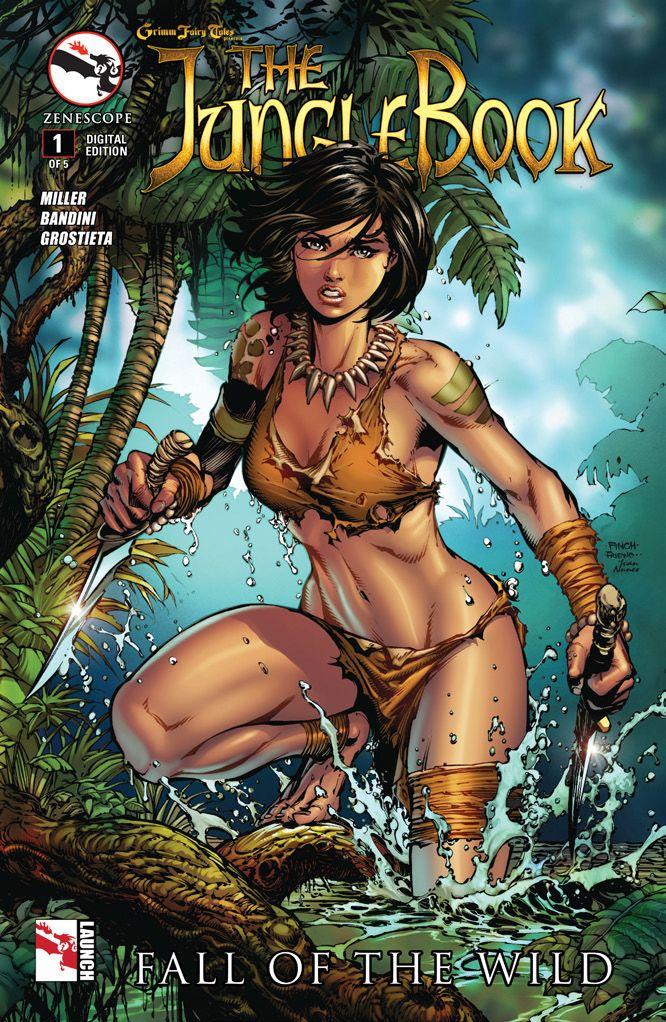Fall of the Wild Third Mini in Zenescope's Jungle Book Trilogy
FTC Statement: Reviewers are frequently provided by the publisher/production company with a copy of the material being reviewed.The opinions published are solely those of the respective reviewers and may not reflect the opinions of CriticalBlast.com or its management.
As an Amazon Associate, we earn from qualifying purchases. (This is a legal requirement, as apparently some sites advertise for Amazon for free. Yes, that's sarcasm.)

It may or may not have been officially declared as such in Zenescope's GRIMM FAIRY TALES UNIVERSE, but I believe there's a fifth realm (perhaps even more) in Zenescope's multiverse: The Realm of Kipling. That seems to be supported by Zenescope's adventure series based on the Rudyard Kipling novels. Mark L. Miller pens the third miniseries installment of THE JUNGLE BOOK, THE FALL OF THE WILD, where Mowglii (female in this version) lives among talking animals who segregate into species-based factions to war against each other. (It's sort of like LEGENDS OF CHIMA, with blood and revealing outfits.)
While Mowglii ruminates with Bagheera on the warlike nature of almost all the species on the island of Kipling, Baloo fights mightily to keep the bears in check and underground while Bandar Louis repeats his daily quest to make it past the deadly Kaa so he and his army can take over the island. And while all this happens, it appears that the island itself has had quite enough of all the fighting, and is about to fight back.
There are other humans in Kipling, each with their own agenda and allegiance. Shere Bomani is a male who has sided with the scavengers, including Shere Khan and Shere Kutil. Akili is a human female who lives among the small creatures, the Tavi. Dewan is certifiably nuts, and is the partner of Bandar Louis and the other monkeys. And the God of Fear and Fire stands alone and apart, with an agenda all his own that involves Mowglii -- and he's closer to her now than ever.
Using the characters of The Jungle Book stories as the template for this interpretation makes for a unique storytelling opportunity, and Miller appears to be taking full advantage of that. Michele Bandini's artwork, while not overly detailed, still works wonderfully here, giving the animal denizens of Kipling a pseudo-anthropomorphic style, possessing qualities of expression while sticking closely to the natural appearance of the animal. The story is unhindered by a ton of backstory, while still managing to weave a number of separate plots around a central nexus. Kipling would be an nice place to be able to visit regularly, once the mini-series is completed.


